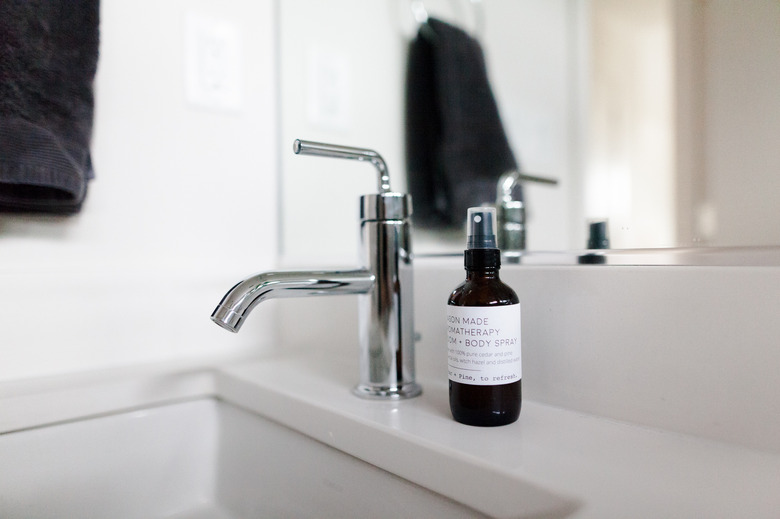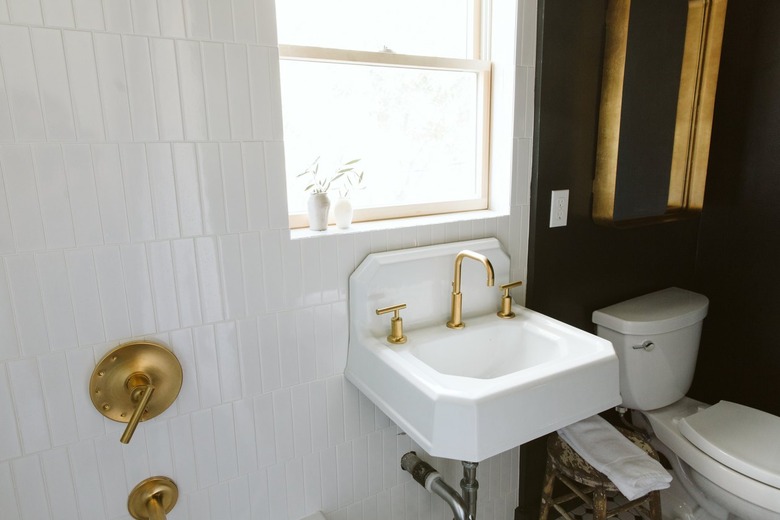Bathroom Sink Aerator Types And Sizes
If you've noticed a reduction in your bathroom faucet's water flow, it may be time for a new aerator. Bathroom sink aerators wear over time and can also become clogged, especially if you have hard water. Replacing the aerator is as simple as twisting off the old one from the end of the faucet spout and screwing on a new one on, but you'll need to know what you're seeking. Aerator sizes vary, and there are several different types from which to choose.
What is a Bathroom Sink Aerator?
What is a Bathroom Sink Aerator?
If you're new to plumbing, it's possible that you've never even heard of a bathroom sink aerator. You've certainly used one, however, and you likely noticed if you used a sink that didn't have one. An aerator is simply a small screen that fits on the end of your sink faucet. As its name suggests, it adds air to the water that comes out of the faucet spout, helping to regulate the water pressure and making the stream more consistent.
If you've ever taken a shower with low water pressure, you know how frustrating it can be. What you may not know, however, is that too much water pressure is equally problematic. When left to its own devices, the water coming out of your bathroom sink does so with a great amount of force. This causes the water to splash and make a mess while allowing more water to flow through the faucet than you really need.
An aerator adds air to the water, thereby breaking up the water stream. This allows you to maintain the sensation of high water pressure while using less water and minimizing splashing.
Sink Aerator Thread Patterns — Male vs. Female
Sink Aerator Thread Patterns — Male vs. Female
Aerators come in male and female thread patterns, and the faucet on your bathroom sink determines which type you need. The gender reveal for your aerator won't be as exciting as most gender reveal parties with balloons and cake, but it's still very important. If your bathroom sink already has an aerator on it, you may need to remove it to determine the gender.
Male aerators have threads on the outside, while female aerators have threads on the inside. You need whatever one your sink doesn't have. If your sink has threads on the inside of the faucet, then it is female and requires a male aerator. If the faucet has threads on the outside, then it is male and needs a female aerator.
Sink Aerator Sizes
Sink Aerator Sizes
Sink aerators come in three different sizes, so you'll need to look at your faucet and decide which one you need. According to New Resources Group, aerators come in standard, junior and Tom Thumb sizes. These aerators are approximately the diameter of a quarter, a nickel and a dime, respectively.
Unfortunately, the aerators at your local hardware store may not be labeled according to pocket change. If you're looking for a standard male aerator, the label will call it a "15/16-27 M" (male) or "55/64-27 F" (female). Junior aerators, sometimes called small aerators, are available as a 13/16-27 M or 3/4-27 F.
The thread patterns on these aerators get labeled in inches, but Tom Thumb aerators switch to the metric system. You will find Tom Thumb aerators marked as M18 M or M16 F.
Sink Aerator Style and Flow
Sink Aerator Style and Flow
Aerators slow the flow of water going through your faucet spout to help you use less water. You can, however, control how much water your aerator uses by choosing the desired flow rate. If you're using an aerator in the kitchen where you'll fill large pots, for example, you may want an aerator that allows water to flow at the standard rate of 2.2 gallons per minute (gpm). According to Danco, a lower flow rate of 0.5 to 1 gpm is better for washing your hands and is all you need in bathroom sinks.
After choosing a flow rate, it's time to choose your style. Standard aerators simply direct the water stream straight down while adding some air for a reduced splash zone. Others, however, divert the water into several small streams to form a spray of water rather than a continuous stream. You can also choose rain aerators to mimic the feel of a gentle rain or a Mikado stream design that creates an effective but attractive twisted water stream that looks pretty darn cool.
You may also find faucets and aerators that bear the WaterSense label. This label indicates that the aerator meets U.S. Environmental Protection Agency standards for reducing water consumption. WaterSense aerators have a maximum flow rate of 1.5 gpm.
References
- New Resources Group: The Faucet Aerator Guide
- Danco: What Is an Aerator and Why Do I Need One?
- YouTube: New Resources Group – How to Figure out Which Aerator (Faucet Fixture) You Need
- United States Environmental Protection Agency: Bathroom Faucets
- Neoperl: Stream Patterns
- PlumbingSupply.com: Guide to Faucet Aerators

